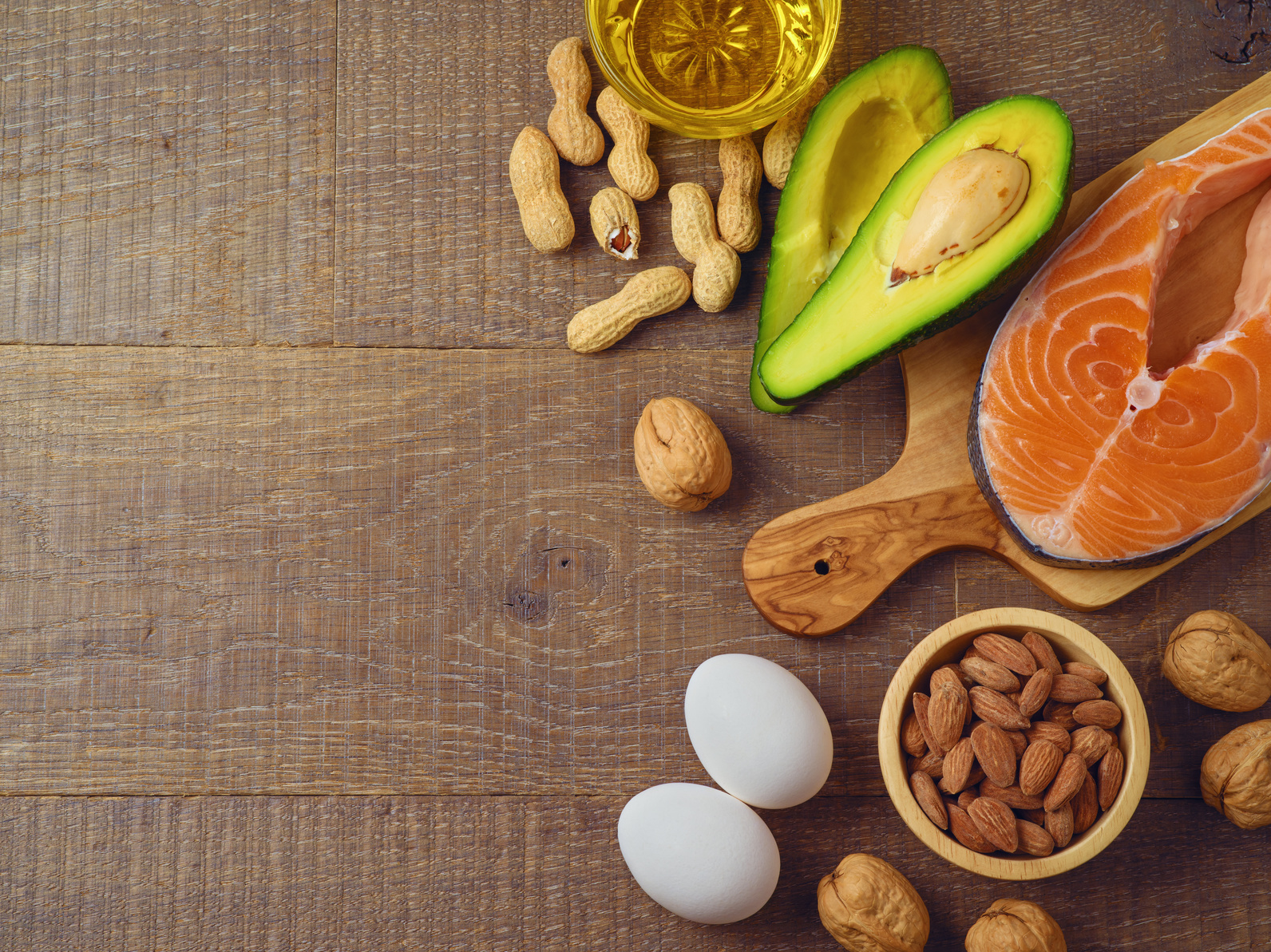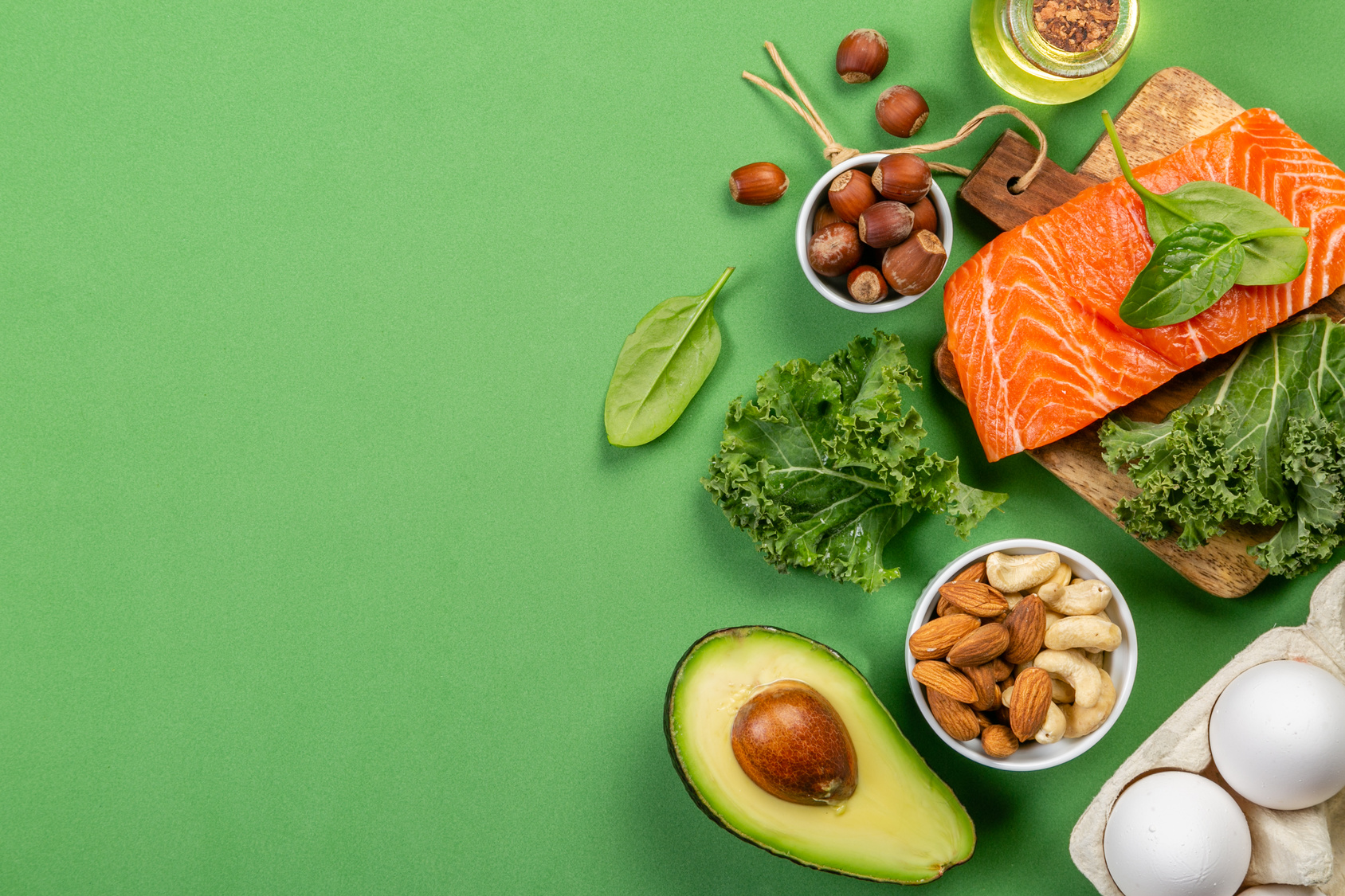Are you in search of the finest low-carb and ketogenic recipes available on the internet? Well, you’ve come to the right spot. These recipes are centered on healthy fats and low-carb vegetables, delivering exceptional flavor and nutritional value, all while containing 5 to 10 grams of carbohydrates per serving.
Furthermore, they are abundant in essential fats, nutrients, and delectable flavors that will keep you satisfied and energized throughout the day.
Please note that the photographs are copyrighted by the blog that initially shared the recipe. To access the full recipe on the original blog, just click on the recipe title beneath any photo.
The Keto Diet Defined
The ketogenic diet, often referred to as keto, is a unique eating plan designed to encourage your body to use fat as its primary source of energy. Here are the key components:
- High-Fat: The diet emphasizes the consumption of healthy fats, making up the majority of your daily caloric intake.
- Moderate-Protein: Protein intake is moderate and carefully controlled, preventing excessive consumption that might hinder ketosis.
- Very Low-Carb: Carbohydrates are significantly restricted, with daily intake limited to fewer than 25 grams.
The Science Behind Ketosis:
When you drastically reduce your carb intake, your body undergoes a remarkable transformation. Instead of relying on glycogen (sugar) for energy, it switches to burning stored fat.
Here’s how it works:
The liver engages in a process called ketogenesis, where fats are broken down into ketone bodies. These ketones serve as a vital energy source for the brain and other cells.
This metabolic state, characterized by elevated ketone levels, is known as ketosis.
Additional resource – Can you run on the keto diet?
The Complete Keto Food Diet List
When you’re embarking on a keto journey, knowing what to eat and what to avoid is crucial for success. Here’s a comprehensive list of keto-friendly foods to stock up your kitchen, as well as items to steer clear of:
Keto-Friendly Foods to Stock:
- Fats and Oils: Load up on healthy fats and oils such as butter, olive oil, sesame oil, almond oil, and flaxseed oil. These will be your primary sources of energy.
- Dairy Products: Opt for full-fat dairy options like sour cheese, sour cream, heavy cream, and Greek yogurt. These provide essential nutrients while keeping carb intake low.
- Eggs: Eggs are a keto staple, packed with protein and healthy fats. They’re incredibly versatile for keto cooking.
- Meat: Enjoy a variety of meats, including chicken, beef, goat, veal, and other low-carb options. They provide essential protein and fats.
- Fish: Fish like trout, salmon, sardines, catfish, and tuna are rich in healthy omega-3 fatty acids and make excellent keto choices.
- Nuts and Seeds: Walnuts, almonds, pumpkin seeds, sunflower seeds, and sesame seeds are keto-friendly snacks packed with nutrients.
- Low-Carb Fruits: Some fruits, like avocados, strawberries, and raspberries, are relatively low in carbs and can be included in your keto diet in moderation.
Foods to Avoid on Keto:
- Grains and Starches: Eliminate grains like wheat, corn, oats, and rye, which are high in carbohydrates.
- Processed Foods: Avoid processed foods, especially those containing carrageenan, as they can hide hidden carbs and additives.
- Sugary Foods and Drinks: Stay away from sugary foods and drinks, as they are rich in carbs and can easily kick you out of ketosis.
- Low-Fat Products: Skip low-fat products, including drinks, gluten-free items, and diet sodas. These often contain added sugars or unhealthy artificial sweeteners.
- Fruits: Most fruits are high in natural sugars, making them incompatible with keto. Exceptions include the low-carb fruits mentioned earlier.
- Root Vegetables: Avoid starchy root vegetables like potatoes, carrots, and beets, as they are carb-heavy.
- Beans and Legumes: Beans, lentils, and other legumes are carb-rich foods and not suitable for keto.
- Alcohol: Most alcoholic beverages are high in carbs. While some low-carb options exist, alcohol can affect ketosis and should be consumed in moderation.
- Sugary Ingredients: Read labels carefully and avoid any products containing added sugars or high-carb ingredients.
Additional resource – Marathon on Keto Training
Top 30 Low-Carb, High-Fat, Ketogenic Recipes
Without further ado, here’s my best list of keto recipes for a low-carb delight.
1 – Garlic Keto Bread
Garlic Keto Bread is a recent low-carb bread recipe that has captured my heart. It’s versatile and can be enjoyed as a snack, appetizer, or side dish, making it perfect for those on a healthy ketogenic diet. When it comes to garlic flavor, you have two options to choose from.
You can use fresh garlic (grated or pressed) for a more Italian bruschetta-like bread or opt for garlic powder to achieve the classic American garlic bread taste. If you’re a fan of spices, feel free to add some dried basil to suit your taste buds. It’s all about flavor customization!
Ingredients
- Almond flour
- Ground psyllium husk powder
- Baking powder
- Egg white
- Sea salt
- White wine vinegar
- Garlic clove
- Butter
- Fresh parsley
- Fresh thyme
- Dried oregano
2 – Low Carb Broccoli Cauliflower Salad With Bacon & Mayo
Low Carb Broccoli Cauliflower Salad with Bacon and Mayo is a satisfying and extremely low-carb dish. It’s bursting with flavor and comes together in just 10 minutes, making it a colorful, easy-to-make option suitable for any occasion.
Plus, it tastes fantastic, and you can even prepare it ahead of time as it maintains its deliciousness when stored in the fridge overnight. If you want an extra layer of flavor, consider adding a creamy and tangy dressing to elevate it even further. Enjoy!
Ingredients
- Fresh thyme
- Olive oil
- Garlic powder
- Mayonnaise
- Lemon juice
- Sea salt and pepper
3 – Zucchini Noodle Salad With Cheese & Tomatoes
Zucchini Noodle Salad with Cheese and Tomatoes is a delightful and healthy dish that will make you want to invest in a spiralizer if you haven’t already. This recipe features raw spiralized deli veggies, avocado, cucumber, and a low-carb dressing of your choice.
It’s an excellent option for those seeking a low-carb pasta replacement. Plus, if you already have cooked bacon or turkey on hand, there’s no need for any additional cooking. Enjoy this flavorful and nutritious salad!
Ingredients
You’ll need a spiralizer to make zucchini noodles.
I love this one from Amazon.
- Zucchini
- Cherry tomatoes
- Shredded cheese
- Mozzarella pearls
- Fresh basil
- Dressing
- Extra virgin olive oil
- Lemon juice
- Red wine vinegar
- Garlic powder
- Sea salt and pepper.
Additional resource – Salt for runners
4 – Keto Eggplant Burgers
If you’re craving burgers but want to stick to your keto diet, this recipe is perfect for you. It features keto eggplant burgers with eggplant slices as the buns, which hold together nicely when cooked. These burgers are a great keto-friendly snack or side dish. You can use your choice of ground meat but don’t forget to prepare the recommended dipping sauce for added flavor. Enjoy a delicious and satisfying keto-friendly burger experience!
Ingredient
- Japanese eggplant
- Ground pork
- Green onion
- Black pepper
- Ginger
- The dipping sauce
- Tamari sauce
- Garlic cloves
- Apple cider vinegar
- Sesame oil
- Salt and pepper

5 – Keto Garlic Bread
If you’re a fan of garlic bread but want a low-carb and gluten-free option, you’ll love this keto-approved version. Keto garlic bread is a healthier alternative to traditional bread, with a soft inside and crispy outside.
The addition of cream cheese adds richness and creaminess to the bread. Best of all, this recipe has only 1.5g net carbs per slice, making it a perfect addition to your keto diet without compromising on taste. Enjoy this keto garlic bread any time of the day!
Ingredients
- Almond flour
- Eggs
- Shredded mozzarella cheese
- Kosher salt
- Baking sold
- Topping
- Melted butter
- Kosher salt
- Garlic powder
- Dried oregano
- Shredded mozzarella cheese
6 – Keto Salad Niçoise
The classic Niçoise salad traditionally contains potatoes, green beans, and other ingredients that are not keto-friendly. However, this keto version of the Niçoise salad is packed with nutrients and flavors while keeping the carb count low and adding healthy fats.
It makes for a delicious and satisfying lunch or dinner option, and it’s great for meal prepping. For an extra burst of flavor, serve it on a bed of zucchini noodles. Enjoy this keto salad Niçoise without worrying about your carb intake!
Ingredients
- Ground black pepper
- Chopped garlic
- Eggs
- Celery root
- Green beans
- Olive oil
- Tomatoes
Dressing
- Dijon mustard
- Worcestershire sauce
- anchovies
- Small capers
- Mayonnaise
- fresh parsley
- olive oil
- minced garlic clove
- lemon juice
Additional resource – macros for runners
7 – Cornbread Keto Bread
If you’re missing the taste of cornbread while following a keto diet, this recipe is perfect for you. This “corn” bread recipe doesn’t contain corn, but it’s still delicious and allows you to enjoy the flavors of cornbread in a healthy way on your keto journey.
It has a wonderful texture and is low in carbs, with approximately 0.6 net carbs per serving. You can enjoy this keto cornbread without worrying about your daily carb intake.
Ingredients
- Almond flour
- Egg
- Green onions
- Baking powder
- Full-fat sour cream
- Melted butter
- Salt
8 – Grilled Eggplant Salad
This grilled eggplant salad is both easy and delicious, making it a perfect accompaniment to any grilled meat, especially during a summer barbecue.
If you want to enhance the flavor, consider adding smoked almonds, Himalayan salt, or chili powder. You can also experiment with various spices to tantalize your taste buds. Enjoy this flavorful and healthy salad!
Ingredients
- Eggplants
- Olive oil
- fresh mozzarella cheese
- Garlic powder
- Lemon juice
- fresh mint
- Anchovies
- Tomatoes
- smoked or roasted almonds
- Sea salt and pepper
9 – Salad With Roasted Cauliflower
The Salad with Roasted Cauliflower is a delightful low-carb dish featuring refreshing flavors and a zesty lemon dressing, with the option to add a spicy kick if desired. This recipe is particularly useful for those following a vegan keto diet, showcasing that it’s feasible to be both vegan and keto.
Plus, with avocados, nuts, and olive oils as key ingredients, this dish is rich in healthy fats, aligning perfectly with the keto diet principles. To elevate the dish, consider garnishing it with fresh thyme and a low-carb crumb for an extra layer of flavor. Enjoy this nutritious and flavorful salad!
Ingredients
- Large head cauliflower
- Garlic cloves
- Olive oil
- Lemon
- Avocado
- Nuts
- Garnish green onion
- Salt and pepper
You might want to refrain from cauliflower and broccoli for people with an upset stomach.
These build up more gas inside your tummy and make you bloated.
10 – Zucchini Crust Grilled Cheese
Indulge in a bread-free zucchini grilled cheese that is both low-carb and gluten-free with this recipe. The zucchini “bread” is crafted from shredded zucchini, Parmesan, mozzarella, and a blend of seasonings.
These grilled cheese sandwiches offer a healthier and lower-carb alternative to traditional options, making them a delicious choice for those on a keto or low-carb diet. Enjoy the savory flavors and satisfying crunch of this zucchini crust grilled cheese!
Ingredients
- Grated zucchini
- Egg
- Green onion
- Grated Parmesan
- Shredded cheddar
- Cornstarch
- Salt and pepper
- Vegetable oil—for cooking
The super yummy choice for cheese lovers.
My secret tip is to add grilled or diced Halloumi cheese for extra taste.
Worth a try!
11 – Keto Caesar Salad
Enjoy a keto-friendly twist on the classic Caesar salad with this delicious recipe. This keto Caesar salad features crisp romaine lettuce, generous amounts of Parmesan cheese, and tender chicken, all tossed in a flavorful homemade Caesar dressing made with keto-approved ingredients like lemon juice, olive oil, garlic, and anchovies.
It’s a simple and mouthwatering option for those following a ketogenic diet. Don’t forget to add extra cheese and opt for low-carb croutons for an extra indulgent experience!
Ingredients
- Romaine lettuce
- Slices of chicken or bacon cooked and crumbled
- Shredded parmesan cheese
- Gluten-free garlic croutons (check the recipe here)
- Sea salt & pepper
- Tomato
- Cucumber
- Hard-boiled eggs
- Chicken breast
- Olive oil
Dressing
- Mayonnaise
- Lemon juice
- Dijon mustard
- Grated parmesan cheese
- Fresh black pepper
- Garlic clove
- Mustard powder
- Sea salt and pepper
Another secret tip from me.
Salted eggs! No need to add more salt since it will give you a different experience for a salty and creamy meal.
Pick one made of goose or duck eggs.
12 – Creamy Meatballs
Treat your taste buds to a flavorful and satisfying meal with these creamy ketogenic meatballs. These juicy meatballs are paired with a rich and creamy queso sauce, making them an irresistible option for the whole family.
You can serve them as a keto-friendly appetizer or as a meal, perhaps over cauliflower rice or zucchini noodles, depending on your preference. The best part? You can prepare and sear them in about 30 minutes and then let them slow cook to perfection. Enjoy a delicious and hassle-free keto meal with these creamy meatballs!
Ingredients
- Ground beef
- Yellow onion
- Egg
- Garlic powder
- Black pepper
- Cream cheese
- Butter
- Cream sauce
- Cream cheese
- Heavy whipping cream
- Tamari soy sauce
- Salt and pepper
I called this lazy food.
Why?
Because it is suitable for filling my tummy during my lazy day.
Super creamy and mouthgasmic.
Additional resource – Diet mistakes runners make
13 – Coconut Flour Keto Flatbread
When you’re short on time and need a versatile keto-friendly option for burger buns, sandwich bread, or pizza bases, this coconut flour keto flatbread is your go-to solution. With just five simple ingredients, it’s quick and easy to prepare, taking only 10 minutes to make.
You have the freedom to load it up as an open sandwich, spread it with peanut butter, dip it in sauces, create a mini pizza, or use it as sandwich bread. Get creative and savor this delicious and convenient flatbread!
Ingredients
- Coconut Flour
- Coconut oil (or melted butter)
- Egg
- Baking powder
- Salt
14 – Spicy Shrimp And Avocado Salad
If you’re a fan of avocado and shrimp, you’re not alone! Here’s an amazing recipe for you to enjoy. Spicy shrimp and avocado salad is packed with fresh ingredients that will tantalize your taste buds with every bite.
This recipe is quick to make and highly portable. Simply sear the shrimp in butter, dice some veggies, whip up a dressing, and you’re good to go. For an extra kick, you can even sprinkle some chili powder on it before tossing it into the pan. Get ready to savor the deliciousness!
Ingredients
- Baby kale and baby spinach mix
- Shrimp
- Avocado
- Cilantro
- Olive oil
- cucumber
- Lime juice
- Garlic
- Cumin
- Salt and pepper to taste
15 – Low-carb Cheese Taco Shells
If you’re a fan of Mexican food, especially tacos, but want to stay low-carb, here’s a fantastic recipe for you. Regular tacos may be off-limits on the keto diet due to their high-carb content, but these low-carb cheese taco shells are the perfect solution.
Made from baked cheddar cheese and shaped into a taco shells, they’re quick to prepare (just a matter of minutes!), gluten-free, and keto-friendly. Not to mention, they’re delicious, crunchy, and come close to the real thing. Fill them with your favorite keto-friendly toppings like grated cheese, ground meat, diced onion, sour salsa, shredded lettuce, chopped peppers, and more. Enjoy your keto-friendly tacos!
Ingredients
- Shredded Cheese
- Ground cumin
16 – Egg Salad Stuffed Avocados
Eggs and avocados are both fantastic sources of healthy fats, making them essential for a ketogenic diet. Eggs are rich in complete protein, which helps keep you feeling full all day long. That’s why this dish is a must-try for any dedicated keto enthusiast. It also serves as a delightful, straightforward, and fulfilling lunch option. Enjoy!
Ingredients
- Hard-boiled eggs
- Celery
- Lime juice
- Avocado
- Hot sauce
- Cumin
- Salt and pepper
17 – Salmon and Avocado Nori Rolls
Traditional sushi with rice is a no-go on the keto menu due to its high carb content. However, you can still enjoy a delicious sushi-like dish without rice. This recipe uses riced cauliflower as a low-carb alternative to traditional rice. The best part? It only requires five ingredients and 20 minutes of your time. Enjoy a keto-friendly sushi experience!
Ingredients
- Sliced smoked salmon
- Cream cheese
- Chopped pickled ginger
- Nori sheets (grilled preferably)
- Avocado
View Full Recipe
18 – Keto Fish Sticks
If you’re a fan of fish sticks but want to enjoy them in a healthier way, you’re in luck. This keto-friendly fish sticks recipe allows you to savor the flavors of this classic dish without derailing your healthy eating habits. You can make them as traditional breaded fish sticks or as fish nuggets, depending on your preference. Plus, they’re quick and easy to prepare, making them a convenient meal option. Enjoy your guilt-free keto fish sticks!
Ingredients
- Pork rinds
- Eggs
- Alaskan cod filet
- Coconut flour
- Grated Parmesan
- Garlic powder
- Cooking spray
- Salt and pepper
19 – Low Carb Taco Salad
Craving tacos but want to keep it low carb? You’re in luck! This low carb taco salad recipe allows you to enjoy all the delicious flavors of tacos without the carbs. Made with keto-friendly ingredients like ground turkey, avocado, olives, and lettuce, it’s a perfect option for lunch, dinner, or as a tasty side dish. Plus, it’s easy to prepare and packed with mouthwatering flavors. Say goodbye to taco cravings and hello to a satisfying low carb taco salad!
Ingredients
- Ground beef
- Chili powder
- Avocado
- Shredded cheddar cheese
- Tomatoes
- ground cumin
- Dried parsley
- Romaine lettuce
- Sour cream
- Garlic powder
- Green onions
The seasoning
- Cumin
- Chili powder
- Paprika
- Onion powder
- Garlic powder
- Black pepper
- Oregano
20 – Keto Cheese Roll-ups
Looking for a quick and easy keto-friendly snack? These keto cheese roll-ups are the answer! They are incredibly simple to make and require ingredients that you probably already have on hand. These roll-ups are not only delicious on their own but also pair perfectly with dips like guacamole, low-carb pizza sauce, or Ragu sauce.
Whether you enjoy them for breakfast or as a convenient on-the-go snack, you can fill them with your favorite keto-friendly ingredients. The possibilities are endless, so get creative and satisfy your cravings with these tasty keto cheese roll-ups!
Ingredients
- Butter
- Cheddar cheese in a slice
21 – Deviled Eggs
If you’re a fan of deviled eggs but want a keto-friendly option, look no further! This keto deviled eggs recipe uses avocados to achieve that creamy texture without relying on commercial mayonnaise or processed ingredients.
Not only are they delicious, but they’re also a great source of healthy fats. You can prepare a batch and store them in an airtight container for up to 4 days, making them a convenient and nutritious snack option, especially for runners. Enjoy these keto deviled eggs as a tasty and satisfying treat that aligns with your low-carb lifestyle!
Can’t beat them.
Ingredients
- Eggs
- Mayonnaise
- Dijon mustard
- Paprika
- Fresh Dill
- Salt and pepper
22 – Keto Hot Dogs
You heard it right! Embracing a low-carb lifestyle doesn’t mean saying no to hot dogs. With this keto hot dog buns recipe, each bun contains just 2 grams of carbs, a stark contrast to the roughly 20 grams of carbs found in regular hot dog buns. These buns are also easy to make—simply wrap, roll, and bake in the oven.
When it comes to fillings, your options are only limited by your imagination. Consider delicious options like meatballs, pepper-grilled chicken, smoked chicken, tuna, bacon and ham, veggies, avocado, and more. Enjoy your keto hot dogs guilt-free!
Ingredients
- Almond flour
- Baking powder
- Eggs
- Hot water
- Apple cider vinegar
- salt
23 – Cinnamon Bread
Indulge in the deliciousness of cinnamon bread with this versatile and low-carb recipe. This bread is a delightful combination of spicy, sweet, filling, and it tastes just like the real thing. Whether you enjoy it as a decadent dessert, hearty breakfast, or a satisfying snack, this low-carb option is sure to please.
With only 4 grams of net carbs per serving, it’s perfect for those following a low-carb lifestyle. The best part? You can whip it up in less than 5 minutes, making it a quick and easy treat.
Ingredients
- Egg white
- Coconut flour
- Flaxmeal
- Almond flour
- Ground cinnamon
- Melted butter
- Baking powder
- Raisins
24 – Keto Cheese Chips
If you’re craving a crunchy keto snack, these three-ingredient keto cheese chips are the perfect solution. Made primarily with mozzarella and seasoned with oregano and garlic (or any other keto-friendly flavor of your choice), these chips are a delightful low-carb treat.
For a heartier option, consider using Halloumi cheese for a thicker texture. These chips are delicious on their own or paired with guacamole or marinara sauce for dipping. Enjoy a satisfying and crunchy keto snack with these easy-to-make cheese chips.
Ingredients
- Cheddar cheese
- Paprika powder
- Sea salt and pepper
25 – Keto Greek Salad
Keto Greek Salad, also known as Horiatiki, is a perfect representation of healthy Mediterranean cuisine. It’s inherently keto-friendly, as long as you avoid adding gluten or bread to the recipe. This delightful low-carb dish can be enjoyed at any time of the day or week.
The key to crafting an exceptional Greek salad lies in its simplicity and the use of the freshest keto-approved ingredients. Enjoy the vibrant flavors of Greece with this keto Greek Salad recipe.
Ingredients
- Tomato
- Green capsicum
- Cucumber
- Red onion
- Green bell pepper
- Fet cheese
- Dried oregano
- black Greek olives
- Olive oil
- salt and pepper
26 – Cottage Cheese-filled Avocado
Cottage Cheese-filled Avocado is a simple yet nutritious snack that owes its thanks to the Aztecs. Avocados are indeed a versatile and highly nutritious food. Mixing them with cottage cheese creates a snack rich in healthy fats and protein, helping you stay satiated until your next meal.
This snack is an excellent choice to curb mindless nibbling and unhealthy snacking that can contribute to weight gain. The preparation is quick and easy – just slice an avocado in half lengthwise, remove the pit from one-half, and fill the cavity with cottage cheese. For an extra kick, consider adding a pinch of cayenne pepper or regular black pepper.
Ingredients
- Avocado
- Sliced cheese
27 – Keto Egg Muffins
Keto Egg Muffins are a fantastic, time-saving, and keto-approved breakfast option. Whether you’re meticulously monitoring your keto macros or simply need a convenient and quick grab-and-go breakfast, keto egg muffins are an excellent choice.
These muffins are versatile and come in a variety of flavors, making them suitable for meal prep and various occasions. They’re especially appealing to those who enjoy the satisfying combination of bacon, cheese, eggs, and sweet potatoes. You can prepare a batch of these muffins and store them in the fridge for several days, providing a convenient and nutritious snack option whenever you need it. If you want to extend their shelf life, you can even freeze them.
Ingredients
- Eggs
- Scallions
- Onion
- Shredded cheese
- Red peso
- Salami
- Sea salt and pepper
28 – Keto Jalapeno Poppers
If you’re in the mood for something spicy and savory, Keto Jalapeno Poppers are the perfect treat. These poppers combine the fiery kick of jalapenos with the rich flavors of bacon and cheese, making them a delicious and indulgent snack.
While preparing them involves a few steps, the effort is definitely worth it. Just be sure to exercise some self-control and avoid devouring them all in one sitting—they’re meant to be a satisfying snack, not a replacement for your main meals. Remember, it’s important to maintain a balanced diet even when enjoying delicious keto-friendly snacks like these poppers.
Ingredients
- Shredded sharp cheddar
- Cream cheese
- Jalapenos
- Bacon
- Black pepper
- Salt
29 – Low Carb Tortilla Chips
Don’t worry, you can still enjoy chips even on a keto diet! These Low Carb Tortilla Chips are a fantastic keto-friendly alternative that delivers the delicious taste and texture of traditional chips with just a fraction of the carbs.
They’re made using almond flour and cheese to mimic the texture of corn tortilla chips, giving you that satisfying crunch without all the added carbs. So, if you’re craving chips but want to stay on track with your keto goals, give these a try!
Ingredients
- Almond flour
- Golden flaxseed meal
- Shredded mozzarella
- Sea salt and pepper.
30 – Healthy Ketogenic Snacks
In case hunger strikes before one of the main meals, keep it at bay with any of the following options.
- Cheese with olives
- Two hard-boiled eggs
- Strawberries and cream
- A handful of almonds and nuts.
- One avocado with pepper and salt
- Green bean fries
- Kale chips
- String cheese
- Jerky
- Celery filled with cream cheese
- Lettuce or cucumber smeared with peanut butter
- Radishes smeared with butter
One Week Sample
Here how a week of eating looks like on the ketogenic diet.
Monday
- Breakfast: Eggs, bacon, and tomatoes cooked in coconut oil
- Lunch: Burger with cheddar cheese, guacamole, and nuts.
- Dinner: Salmon, egg, and mushroom cooked in coconut oil.
Tuesday
- Breakfast: Egg, basil, avocado, and cheddar cheese omelet.
- Lunch: Chicken salad with olive oil and avocado.
- Dinner: Mackerel with asparagus and spinach cooked in butter.
Wednesday
- Breakfast: Omelet with peppers, broccoli, salsa, and spices.
- Lunch: Shrimp salad with feta cheese and olive oil.
- Dinner: Romaine lettuce with low-carb, high-fat dressing
Thursday
- Breakfast: Cheese omelet with vegetables and avocados.
- Lunch: Ham and cheese slices with almonds.
- Dinner: Salad greens with high-fat dressing
Friday
- Breakfast: Fried eggs with mushrooms and onions.
- Lunch: Shrimp salad with feta cheese and olive oil.
- Dinner: Low Carb Salmon Patties
Saturday
- Breakfast: Eggs, bacon, and tomatoes.
- Lunch: Four ounces of baked fish with butter sauce
- Dinner: Steak and eggs with vegetables.
Sunday
- Breakfast: Coffee with heavy crème
- Lunch: Burger with cheddar cheese, guacamole, and nuts.
- Dinner: Three cups shredded cabbage sautéed in butter and onions
Low Carb, Ketogenic, Recipes you Should Try – The Conclusion
There you have it! If you’re looking for a long list of low-carb ketogenic recipes then today’s post is the right catalyst. The rest is just details.
Please feel free to add your favorite keto recipes in the section below.









